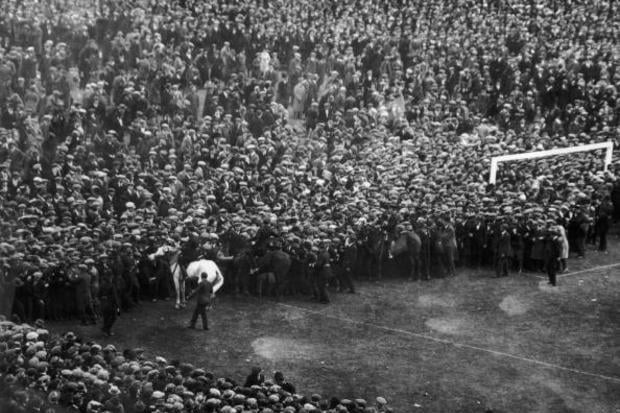 19/04 - 16:00
19/04 - 16:00
 19/04 - 17:00
19/04 - 17:00
 19/04 - 17:30
19/04 - 17:30
 19/04 - 18:00
19/04 - 18:00
 19/04 - 18:00
19/04 - 18:00
 19/04 - 19:00
19/04 - 19:00
 19/04 - 19:30
19/04 - 19:30
 19/04 - 19:45
19/04 - 19:45
 19/04 - 20:00
19/04 - 20:00
 19/04 - 20:00
19/04 - 20:00
 19/04 - 20:15
19/04 - 20:15
 20/04 - 11:00
20/04 - 11:00
 20/04 - 11:00
20/04 - 11:00
 20/04 - 12:30
20/04 - 12:30
 20/04 - 13:00
20/04 - 13:00
 20/04 - 14:00
20/04 - 14:00
 20/04 - 14:00
20/04 - 14:00
 20/04 - 14:30
20/04 - 14:30
 20/04 - 15:00
20/04 - 15:00
 20/04 - 15:00
20/04 - 15:00
 20/04 - 15:00
20/04 - 15:00
 20/04 - 15:30
20/04 - 15:30
 20/04 - 15:30
20/04 - 15:30
 20/04 - 17:00
20/04 - 17:00
 20/04 - 17:00
20/04 - 17:00
 20/04 - 17:15
20/04 - 17:15
 20/04 - 17:30
20/04 - 17:30
 20/04 - 17:30
20/04 - 17:30
 20/04 - 18:00
20/04 - 18:00
 20/04 - 18:00
20/04 - 18:00
 20/04 - 19:00
20/04 - 19:00
 19/04 - 17:00
19/04 - 17:00
 19/04 - 18:00
19/04 - 18:00
 19/04 - 20:15
19/04 - 20:15
 20/04 - 11:00
20/04 - 11:00
 20/04 - 14:00
20/04 - 14:00
 20/04 - 15:30
20/04 - 15:30
 20/04 - 15:30
20/04 - 15:30
 20/04 - 18:00
20/04 - 18:00
 19/04 - 16:00
19/04 - 16:00
 19/04 - 17:00
19/04 - 17:00
 19/04 - 17:30
19/04 - 17:30
 19/04 - 18:00
19/04 - 18:00
 19/04 - 18:00
19/04 - 18:00
 19/04 - 19:00
19/04 - 19:00
 19/04 - 19:30
19/04 - 19:30
 19/04 - 19:45
19/04 - 19:45
 19/04 - 20:00
19/04 - 20:00
 19/04 - 20:00
19/04 - 20:00
 19/04 - 20:15
19/04 - 20:15
 20/04 - 11:00
20/04 - 11:00
 20/04 - 11:00
20/04 - 11:00
 20/04 - 12:30
20/04 - 12:30
 20/04 - 13:00
20/04 - 13:00
 20/04 - 14:00
20/04 - 14:00
 20/04 - 14:30
20/04 - 14:30
 20/04 - 15:00
20/04 - 15:00
 20/04 - 15:00
20/04 - 15:00
 20/04 - 15:00
20/04 - 15:00
 20/04 - 15:30
20/04 - 15:30
 20/04 - 15:30
20/04 - 15:30
 20/04 - 17:00
20/04 - 17:00
 20/04 - 17:00
20/04 - 17:00
 20/04 - 17:15
20/04 - 17:15
 20/04 - 17:30
20/04 - 17:30
 20/04 - 17:30
20/04 - 17:30
 20/04 - 17:50
20/04 - 17:50
 20/04 - 18:00
20/04 - 18:00
 20/04 - 18:00
20/04 - 18:00
 20/04 - 19:00
20/04 - 19:00
 19/04 - 20:15
19/04 - 20:15
 20/04 - 15:30
20/04 - 15:30
 20/04 - 18:00
20/04 - 18:00
 19/04 - 18:00
19/04 - 18:00
 20/04 - 11:00
20/04 - 11:00
 20/04 - 14:00
20/04 - 14:00
 20/04 - 15:30
20/04 - 15:30
 19/04 - 19:30
19/04 - 19:30
 20/04 - 14:30
20/04 - 14:30
 20/04 - 17:30
20/04 - 17:30

A final da Taça de Inglaterra de 1923 é uma das mais famosas finais de sempre da Taça de Inglaterra. Disputada no dia 28 de abril de 1923 no antigo Estádio de Wembley, em Londres, pelas equipas do Bolton Wanderers e do West Ham United, entrou para a história como a «Final do Cavalo do Branco».
Foi a primeira partida a ser disputada no mítico Estádio de Wembley, presenciada pelo próprio Rei Jorge V. A final foi precedida por momentos de puro caos e pânico, quando uma multidão imensa - que excedia completamente a capacidade do Estádio estimada em 125 mil pessoas -, começou a acumular-se em redor da área de jogo e, em alguns casos, já mesmo dentro das grandes áreas.
A polícia procurou controlar a situação e colocar a multidão ordenada, ainda que em vão, com os vários agentes a serem engolidos. Apenas um, montado num garboso cavalo branco de seu nome Billie, conseguiu guiar a turba para fora das quatro linhas. A imagem do cavalo branco, rodeado de um mar de gente, tornou-se icónica no futebol.
O jogo começaria com 45 minutos de atraso, com a moldura humana literalmente a cercar as quatro linhas, ao ponto de ser preciso abrir espaço para os jogadores marcarem cantos ou efetuarem os lançamentos de linha lateral.
Apesar do começo empolgado do West Ham, o Bolton, que era então uma das forças dominantes do futebol britânico, fez valer os seus galões, vencendo por 2x0, naquela que seria a primeira das quatro FA Cups do seu palmarés. Um golo aos dois minutos lançou o jogo e o West Ham, que atacou durante grande parte do primeiro tempo, acabaria batido por um golo polémico, já no segundo tempo.
O pós-jogo continuaria polémico, com a discussão relativamente à segurança nos estádios ingleses a chegar à Casa dos Comuns, dividindo a câmara com acaloradas discussões.
Quase cem anos depois, quando o novo Wembley foi construído, a «Final do Cavalo Branco» não foi esquecida, com uma ponte de acesso ao estádio a receber o nome de «White Horse Bridge» (em português a «Ponte do Cavalo Branco»).
2-0 | ||
David Jack  John Smith  |